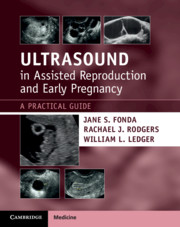Book contents
- Ultrasound in Assisted Reproduction and Early Pregnancy
- Ultrasound in Assisted Reproduction and Early Pregnancy
- Copyright page
- Contents
- Preface
- Acknowledgements
- Chapter 1 Introduction
- Chapter 2 Physics and Instrumentation
- Chapter 3 Gynaecology Ultrasound
- Chapter 4 Uterine Pathology and Anomalies
- Chapter 5 Endometriosis and Adenomyosis
- Chapter 6 Ovarian Anomalies and Pathology
- Chapter 7 Hydrosalpinx
- Chapter 8 Ultrasound-Guided Procedures
- Chapter 9 First Trimester Pregnancy
- Chapter 10 Ergonomics
- Glossary
- References
- Index
Chapter 1 - Introduction
Published online by Cambridge University Press: 12 February 2021
- Ultrasound in Assisted Reproduction and Early Pregnancy
- Ultrasound in Assisted Reproduction and Early Pregnancy
- Copyright page
- Contents
- Preface
- Acknowledgements
- Chapter 1 Introduction
- Chapter 2 Physics and Instrumentation
- Chapter 3 Gynaecology Ultrasound
- Chapter 4 Uterine Pathology and Anomalies
- Chapter 5 Endometriosis and Adenomyosis
- Chapter 6 Ovarian Anomalies and Pathology
- Chapter 7 Hydrosalpinx
- Chapter 8 Ultrasound-Guided Procedures
- Chapter 9 First Trimester Pregnancy
- Chapter 10 Ergonomics
- Glossary
- References
- Index
Summary
Initially this book was conceived as an ultrasound imaging reference volume for nurses and clinicians working in the field of assisted reproductive technology (ART), to illustrate the use of ultrasound in fertility clinics. To reach a wider audience, more information was added, as a reference guide for trainee sonographers, medics, general gynaecologists and midwives.
- Type
- Chapter
- Information
- Ultrasound in Assisted Reproduction and Early PregnancyA Practical Guide, pp. 1 - 9Publisher: Cambridge University PressPrint publication year: 2021



